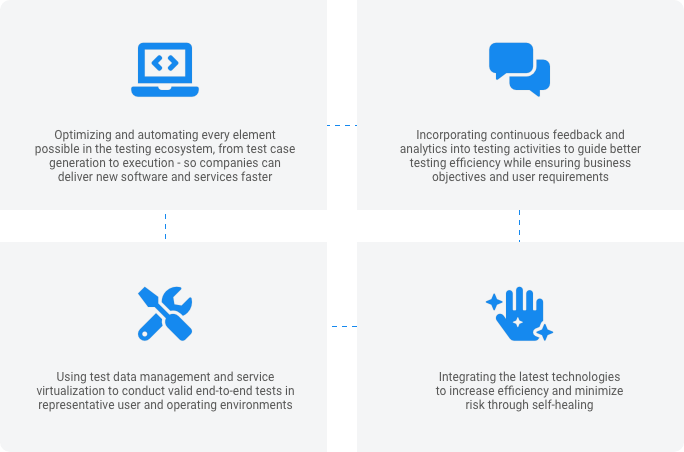Many of these companies are simply not as mature in their software testing and automation processes as they know they should be; for example, only automating a fraction of their regression testing. We surveyed 100+ customers during last year and the most common reasons we found for this lack of evolution were: An inability to put the latest best practices into action, difficulties putting the right team and skill sets together, and a lack of expertise with new technologies and tools such as Qmetry, Perfecto, Headspin, Tricentis Tosca, Applitools, and many more. Even opensource tools in the market like Selenium, Appium which are widely used, haven’t even been explored, much less taken full advantage by many of these companies. And the faster delivery paces being driven by DevOps and Agile initiatives only exposes those shortcomings further.
In a recent Apexon survey of test/QA professionals and executives in the US and UK, participants reported their teams being very challenged by the increasing complexity of software testing and growing pressure to ensure seamless processes and integrations. This includes different components of Continuous Integration such as Version Control tools, Distributed Build Systems, and Artifactory; Continuous Testing elements such as Execution Grids, Containers, Test Case Analytics, and Build Analytics; Continuous Delivery aspects like Cloud, On-Premise, and Appstore deployments; and Logging and Monitoring layers like Log Aggregators, Log Indexers, and Log Analyzers. 50% of the respondents felt that this high degree of complexity caused by increased technological combinations was a major challenge. An equal number said that they did not have sufficient time to test new apps and services before pushing them into production.
While there is a strong understanding that automation can help speed test cycle time and is critical to advancing their DevOps and Agile goals, the majority of organizations polled by Apexon had automated less than 25% of their testing. In the latest World Quality Report, the average level of overall automation was only 16%. Both surveys highlight a huge opportunity for improvement. But as mentioned earlier, delivery paces are becoming faster, and that will mean more test cases. If organizations don’t figure out, and quickly, that they must automate their existing backlog of manual test cases, they will be stuck with more test cases, less time, and no feasible way to determine the correct gap analysis for future releases – leaving them in the digital dust with low quality product and inferior user experience.
If real progress is to be made, and higher levels of automation are to be achieved in a material way, enterprises must find innovative ways to optimize the complete testing cycles.
















